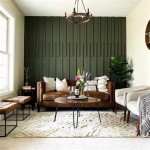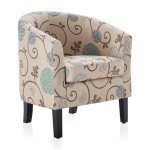All White Furniture Living Room: A Comprehensive Guide
The all-white furniture living room transcends mere trend; it represents a design philosophy centered on light, space, and tranquility. This aesthetic choice, while seemingly simple, requires careful consideration of various elements, ranging from material selection to texture implementation, to avoid a clinical or sterile atmosphere. The goal is to create a living space that is both inviting and sophisticated, leveraging the inherent advantages of a monochromatic palette.
The allure of an all-white living room stems from its ability to amplify natural light, making even smaller spaces feel more expansive and airy. White reflects light, bouncing it around the room and creating a sense of openness. This is particularly beneficial in homes with limited window access or those located in regions with shorter daylight hours. Furthermore, a white backdrop provides a neutral canvas, allowing artwork, accessories, and even architectural details to stand out, creating a focal point and preventing the space from feeling bland.
However, the successful execution of an all-white living room demands meticulous planning and attention to detail. The absence of color necessitates a stronger emphasis on texture, form, and the interplay of light and shadow. Without these elements, the room can easily appear flat, uninspired, and even cold. This article delves into the key considerations for designing an all-white furniture living room, exploring the nuances of material selection, texture application, lighting strategies, and accent integration to achieve a balanced and visually appealing space.
Material Selection: Durability and Aesthetic Appeal
The choice of materials is paramount in an all-white living room. Given the high visibility of dirt and stains on white surfaces, durability and ease of cleaning are crucial factors. Fabrics should be stain-resistant and easily washable, while hard surfaces should be resistant to scratches and scuffs. The material pallete should also consider the overall aesthetic desired for the space. A minimalist design might lean towards sleek, modern materials, while a more relaxed, bohemian style could incorporate natural textures.
For upholstery, options such as performance fabrics, linen blends, and treated cottons are preferable. Performance fabrics are specifically designed to resist stains, spills, and fading, making them ideal for high-traffic areas. Linen blends offer a natural, breathable texture, but require careful maintenance to prevent wrinkles and stains. Treated cottons can also provide a durable and relatively stain-resistant option, but the specific treatment applied is key to its long-term performance. Leather, while a more expensive option, can add a touch of luxury and is relatively easy to clean, although light-colored leather may be susceptible to staining from dark clothing or dyes.
When selecting wood finishes, consider sealed or painted surfaces that are easy to wipe down. Oak, maple, and birch are popular choices for their durability and ability to accept paint well. Avoid porous or untreated woods, as they can absorb stains more readily. For flooring, options such as light-colored hardwood, laminate, or tile can all complement an all-white aesthetic. Consider the texture of the flooring as well, as a slightly textured surface can help to hide minor imperfections and add visual interest.
Accent materials, such as metal and glass, can add a touch of sophistication and contrast to the all-white scheme. Chrome, brushed nickel, and glass accents can provide a sense of modern elegance, while warmer metals like brass or gold can introduce a hint of luxury and warmth. The key is to use these materials sparingly and strategically to avoid overwhelming the space. Consider incorporating metal details in lighting fixtures, coffee tables, or decorative accessories.
The choice of materials should also be informed by the overall style of the home. A modern, minimalist home might benefit from sleek, smooth surfaces, while a more traditional home could incorporate textured fabrics and natural wood finishes. The goal is to create a cohesive and harmonious look that reflects the architectural style of the space and the personal preferences of the homeowner.
Texture: Adding Depth and Dimension
Texture is arguably the most critical element in preventing an all-white living room from appearing flat and uninteresting. By layering different textures, one can create depth, dimension, and visual interest, transforming a potentially stark space into a comfortable and inviting one. This can be achieved through the strategic use of fabrics, rugs, throws, pillows, and even wall treatments.
Incorporate a variety of fabrics with different textures to add visual interest to the seating area. Consider a chunky knit throw draped over a smooth linen sofa, or a plush velvet pillow resting against a textured cotton cushion. Play with different weaves, patterns, and pile heights to create a tactile experience that engages the senses. Rugs are another excellent way to introduce texture and define the seating area. A shag rug can add a sense of warmth and luxury, while a jute rug can provide a more rustic and natural feel. Consider the pile height and texture of the rug in relation to the other fabrics in the room to create a balanced and harmonious look.
Wall treatments can also play a significant role in adding texture to an all-white living room. Consider using textured wallpaper, such as grasscloth or embossed paper, to add subtle visual interest. Alternatively, a painted wall with a textured finish, such as Venetian plaster or stucco, can create a more dramatic effect. Even a simple matte finish can add depth and dimension compared to a flat, glossy paint. Wood paneling, whether painted white or left with a natural finish, can also add texture and warmth to the space. The vertical lines of the paneling can create a sense of height and visual interest, while the natural texture of the wood adds a touch of warmth and organic appeal.
Accessories are another opportunity to incorporate texture into the all-white living room. Ceramic vases with textured glazes, woven baskets, and even framed artwork with textured surfaces can all contribute to the overall tactile experience. Consider layering different textures in the accessories to create a more dynamic and visually appealing display. For example, combine a smooth glass vase with a textured ceramic bowl, or pair a metal sculpture with a woven textile.
Lighting can also play a role in enhancing texture. The direction and intensity of light can accentuate the texture of fabrics, walls, and accessories, creating shadows and highlights that add depth and dimension. Consider using a combination of ambient, task, and accent lighting to create a layered and dynamic lighting scheme. Dimmers can also be used to adjust the intensity of the light and create different moods. The overall effect of incorporating texture in a monochromatic setting is to make the room multi-dimensional and inviting, despite the lack of color variations.
Lighting: Creating Warmth and Ambiance
Lighting is crucial in an all-white living room, as it has the power to transform the space from sterile to inviting. A well-planned lighting scheme can add warmth, depth, and ambiance, while a poorly executed one can result in a harsh and clinical atmosphere. The key is to layer different types of lighting and to use warm-toned bulbs to create a comfortable and inviting glow. The interplay of light and shadow is essential for defining the space and highlighting its textures.
Begin with ambient lighting, which provides overall illumination for the room. This can be achieved through the use of recessed lighting, chandeliers, or pendant lights. Choose fixtures that complement the overall style of the room and that provide a soft, even light. Avoid using harsh fluorescent lights, as they can create a sterile and unflattering atmosphere. Consider using dimmers to adjust the intensity of the ambient lighting and create different moods. This allows flexibility, from bright and cheerful for daytime activities to soft and intimate for evening relaxation.
Task lighting is essential for specific activities, such as reading, working, or playing games. This can be achieved through the use of table lamps, floor lamps, or adjustable wall sconces. Position task lighting strategically to provide adequate illumination for the intended activity without creating glare or shadows. Choose lamps with adjustable arms or shades to allow for greater control over the direction and intensity of the light. Consider the design of the lamps as well, as they can serve as decorative accents in the room.
Accent lighting is used to highlight specific features or objects in the room, such as artwork, architectural details, or decorative accessories. This can be achieved through the use of spotlights, track lighting, or picture lights. Position accent lighting to create a sense of drama and visual interest. Consider using different colored bulbs to create different effects. For example, a warm-toned bulb can be used to highlight a piece of artwork, while a cool-toned bulb can be used to highlight a metal sculpture. The use of accent lighting adds depth and personality to the all-white space.
In addition to artificial lighting, natural light is also an important consideration. Maximize natural light by keeping windows clean and free of obstructions. Use sheer curtains or blinds to filter the light and prevent glare. Consider the direction of the sunlight throughout the day and adjust the placement of furniture and accessories accordingly. Natural light will reflect off the white surfaces, amplifying the sense of space and creating a bright and airy atmosphere.
The selection of light bulbs is also crucial for creating the desired ambiance. Opt for warm-toned LED bulbs with a color temperature of around 2700K to create a cozy and inviting glow. Avoid using cool-toned bulbs, as they can create a harsh and clinical atmosphere. Experiment with different wattages to find the right level of brightness for each fixture. The overall goal is to create a balanced and harmonious lighting scheme that enhances the beauty of the all-white living room and creates a comfortable and welcoming space.

Before After Luxury All White Living Room Decorilla Online Interior Design

Small White Living Rooms Make A Statement 25 Gorgeous Ideas And Tips

Before After Luxury All White Living Room Decorilla Online Interior Design

Goodbye Color 25 Fabulous All White Rooms

24 White Formal Living Room Ideas That Create A Timeless Sophistication

35 Best Paint Colors For Living Rooms

White Interior Design Living Room Ideas Decor Soho Lighting
40 White Living Room Ideas And Designs Renoguide N Renovation Inspiration

Before After Luxury All White Living Room Decorilla Online Interior Design

6 Ways To Rock The Trendy White And Wood Combo In Living Room Northshore Magazine








